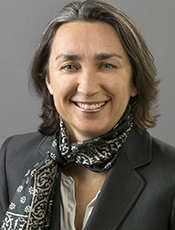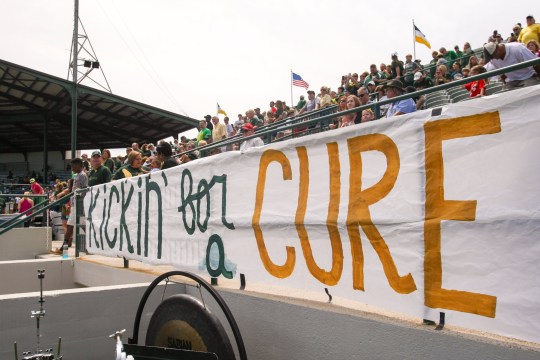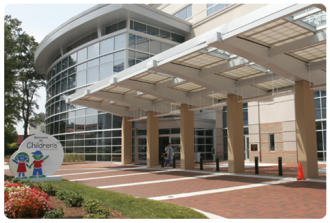GHN Special Report on Child Cancer: Part Three
Jointly reported by Georgia Health News and WebMD
Childhood cancer has been on the rise.
The numbers are small because any childhood cancer is rare. Just one of every 100 new cancer diagnoses in the United States is a childhood case.

Still, the National Cancer Institute (NCI) says there has been a significant increase in the overall rate of childhood cancers in recent decades — up 27% since 1975 in kids under age 19, according to data collected by the NCI’s Surveillance, Epidemiology, and End Results (SEER) Program.
The news comes as the overall incidence of adult cancers has fallen.
The rise seems to be driven, in large part, by an increase in leukemia, which is up almost 35% since 1975. Leukemia is the most common cancer in kids. Soft tissue cancers, like those that develop in bones or muscles, are up nearly 42%. Non-Hodgkin’s lymphoma is up 34%.
“When you see an increase like that — that fast — in a short period of time, most likely it is going to be driven by some exposure to environmental factors,” says Catherine Metayer, MD, PhD, an adjunct professor at the University of California, Berkeley, School of Public Health. She and her team just won a $6 million grant from the National Institute of Environmental Health Sciences to study the causes of leukemia in children.
“In the environment, a lot of things have changed. A lot of chemicals have been brought in. We are all exposed to many of them. So most likely the increase has been driven by some exposure to environmental factors, combined with genetics,” she says.
The increase, strangely, hasn’t received much attention, Metayer says.
“The word is not out,” she says. “I don’t know if because it’s a rare disease, it didn’t get as much attention compared to asthma and other conditions in children.”
A call for more research money
Research into reasons behind the increase has been hamstrung by a lack of funding.

Most of the funding for childhood cancer research comes from the National Cancer Institute. In 2013, the latest searchable budget year available, the NCI had a total budget of $4.9 billion, but spent just 4% of that — roughly $185 million — on childhood cancer. That statistic has spawned a rallying cry for more funding on social media, #morethanfour.
The relatively small number of cases is one reason why childhood cancer doesn’t receive as much research funding as adult cancer, and why few drugs are developed specifically for kids, cancer experts say.

Most of that limited budget goes to treatment, which is great, Metayer says, but it has been at the expense of research exploring possible causes of cancer.
Some cancer experts question how significant the increase is, saying the rate is actually flat, especially in recent years.
Otis Brawley, MD, chief medical officer of the American Cancer Society, says that while some types of childhood cancer are increasing, others have declined or stayed the same. Our ability to diagnose cancers has also improved, he says.
More accurate tests are one reason cited by Ching-Hon Pui, MD, of St. Jude Children’s Research Hospital, for an increase in one of the most common childhood cancers — acute lymphoblastic leukemia (ALL). The rate increased greatly from 1975 into the 1990s, mostly because of better tests, he says. As a result, many patients once counted as having a different type of leukemia were shown to have ALL. But since the 1990s, the actual prevalence of the disease in children has increased only modestly, Pui says.
Meanwhile, childhood cancer 5-year survival rates have improved over the years, and they now are at more than 80%. Brawley says that 70% of children with cancer are in clinical trials, a very high rate.
Looking at genetics and the environment
The cause of most childhood cancers remains unknown. Over the past 20 years, research has tied children’s risk for leukemia to their own exposure to pesticides and paint, to their fathers’ smoking history, and to both parents’ exposure to chemicals on the job, Metayer says.
Brawley says there also “may be some environmental reasons” for an increase. But such links are yet to be proved.

In 2015, researchers from St. Jude and the Washington University School of Medicine in St. Louis found that 8.5% — nearly one in 10 — of the more than 1,000 childhood cancer patients studied were born with genetic changes, or mutations, that increased their chance of getting cancer.
“We really don’t understand why childhood cancer is increasing since we don’t know why most children develop cancer,” says Douglas Graham, MD, director of the Aflac Cancer and Blood Disorders Center at Children’s Healthcare of Atlanta. “In certain situations, we believe that childhood cancer may be caused by a combination of genetic and environmental factors.”
Metayer says her research team will study possible environmental causes of leukemia, focusing on ALL.
The team recently showed that Latino families have a greater chance of bearing children who develop the disease.

Joseph Wiemels, an epidemiologist and biostatistician at the University of California, San Francisco, is one of the leukemia researchers. He investigated a cluster of childhood leukemia in the town of Fallon, NV, where 16 children were diagnosed from 1997 to 2002. Scientists couldn’t find a cause, but they thought the environment played a part. The area is mainly agricultural but is also home to a U.S. Navy aviation training station.
The research team, Wiemels says, “is trying to understand how chemicals may affect immune development.”
It will also look at what chemicals children are exposed to and whether they can affect the DNA of unborn children to make them more susceptible to leukemia.
Says Metayer: “We have enough information now to begin to explore ways in which to reduce children’s exposures that have been consistently linked to increased risk for childhood leukemia, and we will continue to search for new risk factors to better guide future programs for prevention.”
Brenda Goodman is a staff writer for WebMD. Her work has appeared in The New York Times, Scientific American, Psychology Today, The Boston Globe, Self, Shape, Parade, U.S. News and World Report, and Atlanta Magazine. She has a master’s degree in science and environmental reporting from New York University.
Here are links to Part One (Why are kids in Waycross getting cancer) and Part Two (‘You have to figure out how to make it’)

